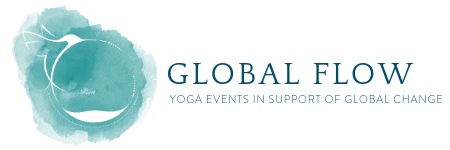Advanced Total Yoga Nidra for Self Care Training - Amsterdam, Weesp
With Nirlipta Tuli
August 16 - 18, 2019
This advanced course of self-nidra training module is created by Nirlipta Tuli, and is for those who have successfully completed the Total Yoga Nidra Immersion course, either in a studio setting or online via the website of Yoga Nidra Network.
It is an intensive exploration of ways of using Total Yoga Nidra for oneself, primarily for self-care and development. It will be held over two three-day periods and have approximately 50 hours of contact time.
There will be a blend of theory and practice of this approach of yoga nidra with an emphasis firmly on:
-
The intensive practice of experiencing many yoga nidra sessions unique to the course.
-
Theory, to understand what the reasoning is for this approach.
-
Exploration of developing methods of nidra for oneself.
-
Receiving guidance on how to craft one’s own unique nidra practice
-
Understanding the how and why of what makes Total Yoga Nidra work.
Below are some of the topics that will be covered during the course:
-
How nidra works- a brief overview and explication. There will be an introduction to neuroscience in relation to nidra- the how, of how it works. This will be done via theory and through absorbing it by experiencing it in nidra.
-
Self-healing, a multi-level sophisticated approach (working in a transcendentally visceral embodied manner with regard to the
nidras which will be utilised). We tend to under-perform because too much is asked of us, because we push ourselves too hard and because we neither rest enough nor sleep enough. This approach shows how to deliberately carve a space in our ridiculously busy and over stressed lives in order to rest, to heal and allow ourselves the space to be, rather than to be in a space where it’s essentially about doing and not being, strengthening the disconnect we have from our true inner selves, the part of us that makes us who we truly are. -
Doing nidra for oneself, actively rather than passively relying on an external voice with liberating and potentially cathartic results. Learn how to do this without having to rely on an external source or voice in an effective manner. There are various approaches to doing this that have been worked out.
-
Breathing and nidra. The use of breath in nidra. What it does, why it’s important and how to use it pragmatically and effectively to alter physiology for a deeper experience of trance in nidra. Very particular forms of breathing suitable for nidra will be explored within select nidra practices.
-
The incredible power of visioning with nidra. An introduction to a method of goal setting or sankalpa, which is significantly different to traditional approaches. It is effective, intuitive and self-directed and therefore more accurate as a gauge and measure of one’s own inner reason for being here (in this life, life’s purpose) pointing to the real motivations that drive us, rather than pressure of succumbing to others, or the rationalising of what we think we ought to do as opposed to what is truly meaningful to us.
-
A precise use of language both as an objective way to discern one’s own inner feelings, thoughts and positions without cognitive blocking or rationalising and as a therapeutic tool for self-enquiry. The introduction, experience of and application of clean language in a nidra context, for oneself and as an adjunct to therapeutic self-exploration. It is a way of uncovering why we are as we are, what our motivations are, where we our tendencies are likely to take us and how we can choose to consciously direct the course of our lives, if we wish, using this disarmingly simple yet very profound approach in the nidra setting.
-
Introduction to an understanding of the role of trance in nidra, self-hypnosis and the link between the two. Using specific forms of self-hypnosis as a nidra tool to access the nidra state in a variety of settings allowing for the facilitation of nidra in both formal and non-formal settings. This will be introduced in an easy yet effective manner.
-
Introduction to hypnosis, hypnotic language, their bonds with nidra, how to begin to use this and the power of words from a hypnotic perspective in relation to nidra. Non-verbal hypnotic nidra as another innovative paradigm.
-
Mapping, re-mapping, and other realities. This is a way of exploring our relation to ourselves and to the world by accessing neural pathways in the brain in new, exciting and powerful ways. In this section there will be an exploration of mapping the body as an extremely powerful tool for self-change. This explores the wonderful and very potent power of nidra for transformational work. It can be a visionary way of connecting with one’s view of themselves and the world.
-
Memory. Using the power of the mind through nidra using venerable paradigms such as the mind palace. Mind palace introduction and application, in order to make the point of how to start using these two old systems, memory palaces and nidra together in this new way. Adding to this would be something more specific, that of remembering nidra by way of another example: perhaps the introduction of remembering a specific nidra, of remembering a series of nidras, a classification system for different components, such as rotations, opposites, settling practices and so on, ways of doing nidra breathing. At least an introduction to this. How far it goes will depend of course on where people are in themselves and what they’re capable of dealing with. The nidra memory example is to show what is possible that people can translate as it were and use in their own areas of interest. It’s a really valuable life tool.
-
Exploring the ovals. These are perfect nidra metaphors for connecting with ourselves directly, bypassing cognitive resistance, concerns and worries of the everyday mind. This is a series of nidras revealed to me during an intense period of doing pranayama and nidra. These range from deceptively simple to complex elaborate nidra entities and have a strong purpose. They are both powerful and very beneficial for doing nidra for oneself (and are also deeply relaxing).
-
Bringing it all together. Creating your own practice. Here there will be a tying up of loose ends and consolidating the learnings of the course.
The second weekend of the Self-Care module will continue to build on and deepen what was introduced during the first part. In addition, there will be further practices added to consolidate and enhance participants experience. Also, there will be guidance on using the practices in real life settings. As before, the weekend will be substantially made up of the intense reinforced experience of self-care
About the Teacher

Nirlipta Tuli
Nirlipta Tuli is founder and co-partner of Sitaram Partnership and also Yoga Nidra Network. Nirlipta's particular interest lies in the therapeutic applications of yoga nidra, where he focusses on insomnia and sleep related issues, lucid dreaming, dealing with stress, enhancing productivity for individuals and groups, and pain related issues. Much of this has been informed by […]
Learn more about Nirlipta Tuli
